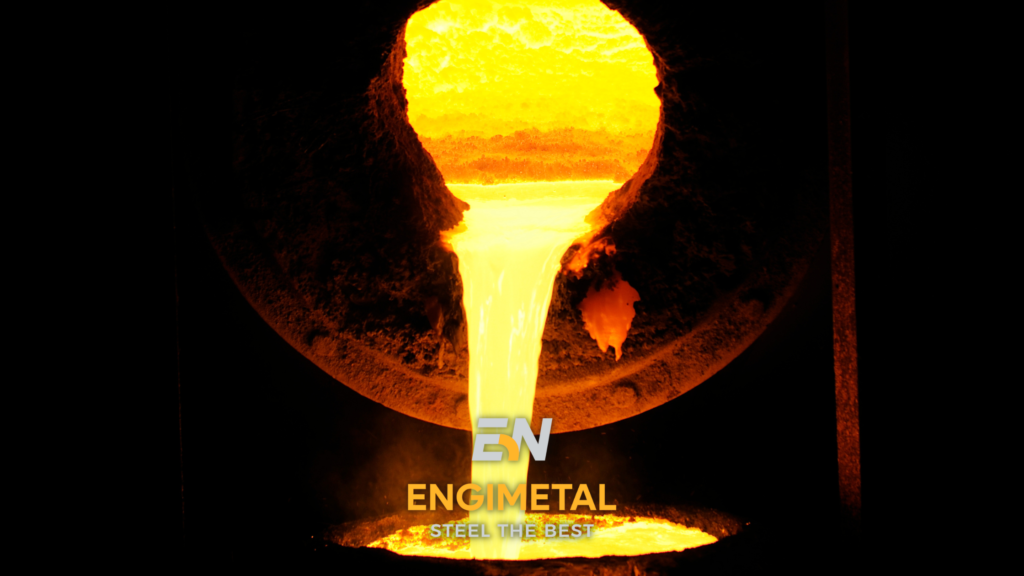
To obtain the desired properties of castings, a number of treatments are used to adjust their specific parameters to the functions they are to perform. Such treatments include, among others, thermal treatment. In the past, we have written more extensively about the heat treatment of cast steel and cast iron - today we will be interested in sorbitization, also known as pre-hardening or surface hardening.
Sorbitization is a thermal process used in foundry to improve the mechanical and structural properties of castings. It consists in controlled cooling of castings in conditions that allow obtaining the desired microstructure of the material. More specifically, this process converts an austenitic structure (improving corrosion resistance by adding silicon, chromium or aluminum, as discussed here) to a sorbite structure. Sorbitol, in turn, is a finely dispersed cementite in a ferritic matrix, which is more plastic and durable than austenite, which translates into improved casting properties.
The sorbitization process is aimed at increasing the hardness of castings and improving their strength and resistance to cracking. It is particularly desirable in the case of cast iron and steel castings, where it is important to evenly distribute pearlite in the structure of the material. Pearlite is a structure composed of layers of ferrite and cementite, which gives castings mechanical properties.
During sorbitization, the casting is heated to a high temperature and then cooled under appropriate conditions. Sorbitization of castings requires precise control of the cooling process, temperature and duration, as appropriate cooling parameters allow to achieve the desired structural and mechanical characteristics of the casting.
The introduction of the sorbitization process can significantly improve the quality and strength of castings, increasing their utility value. This is important, especially when castings are used in industries such as the automotive, machinery and energy industries, where components with high strength and durability are required, and at the same time with appropriate flexibility of use.
Sorbitol is a structural component that is a mixture of ferrite and cementite with a dispersion that decreases with increasing temperature. It is formed in structural alloy steels for thermal improvement after high tempering at a temperature of approx. 400–600 °C. It is characterized by high strength and plastic parameters. The hardness of sorbitol, depending on the chemical composition of the casting material and tempering conditions, ranges from 44 to about 56 HRC (Rockwell hardness scale).
Sorbitization in foundry has several main purposes, which are to improve the mechanical and structural properties of castings. What are the main goals of sorbitization?
Strength improvement: The sorbitization process leads to the formation of a sorbite structure in castings, which is characterized by higher mechanical strength than austenite. Sorbitization increases the hardness, tensile strength, wear resistance and fracture toughness of castings.
Increasing fatigue resistance: Sorbitization can improve the fatigue resistance of castings and increase their durability. The sorbite structure has the ability to absorb energy and dissipate stress, which reduces the risk of cracking and damage caused by cyclic loading.
Resistance to deformation: The sorbitization process makes castings more resistant to deformation. This is especially important for elements that are subjected to stresses and dynamic loads.
Increasing durability: Thanks to better mechanical properties, castings subjected to sorbitization are more durable and resistant to damage. They have greater resistance to wear, corrosion and external factors.
Quality improvement: Sorbitization allows to obtain castings with a uniform, fine-grained structure, which translates into higher quality of products. Improving the structure of the material reduces the risk of defects such as pores, inclusions or uneven phase distribution.
Sorbitization goals are aimed to ensure high quality, durability and performance of castings that would meet technical and functional requirements for various industries. Improving the mechanical properties of castings allows the creation of components with values such as increased strength, flexibility and durability, which is crucial in many industrial applications.
What exactly is the sorbitization process?
The casting sorbitization process requires precise control of parameters such as temperature, duration of heating and cooling, and specific cooling method. Creation of good quality castings with the desired structure and mechanical properties can be achieved by appropriate selection of these parameters.
Sorbitization is a process used in the foundry industry to obtain castings of high strength and durability. Thanks to this process, it is possible to supply components with excellent mechanical properties to various industries.
Need help choosing casting materials? Write to us.
Do you want to order castings from professionals? Check our offer.
